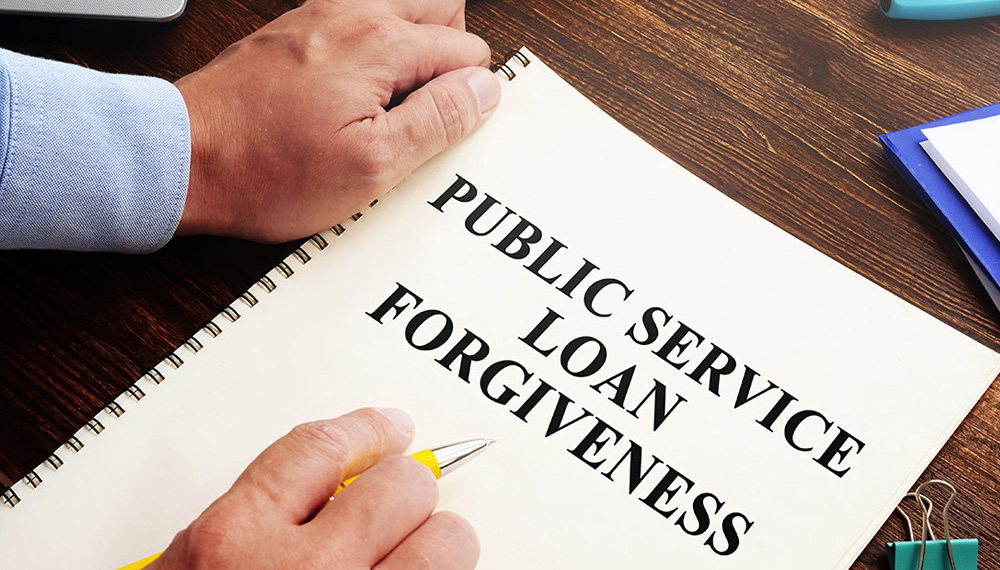Are you faced each day with the question of how to pay back your loan? Well, you shouldn’t be because public student loan forgiveness can help you out. The program is designed to help lessen the burden of loan repayment and also help the borrower save up funds. Read on for more details.
What is Public Student Loan Forgiveness
Public Student Loan Forgiveness is a program that lessens the financial burden of borrowers who work in public service. The program was created by the College Cost Reduction and Access Act of 2007 and gave access to borrowers who make regular payments on their federal direct loans while working full-time for qualifying companies with a route to loan forgiveness.
How to Qualify for Public Student Loan Forgiveness
Becoming part of this great offer is very easy. It used to show you how:
First, you need to be employed in a full-time public service job. This can be in any level of governmental office (federal, state, local, or tribal).
Then, consider the type of loan you want to apply for. This is very important because its not all public loan that can be granted forgiveness.
Before borrowing, you must consider a good strategy for making payments. Thus, borrowers must be enrolled in an income-driven repayment plan, such as Income-Based Repayment (IBR), Pay As You Earn (PAYE), or Revised Pay As You Earn (REPAYE). These plans typically base monthly payments on income and family size, ensuring that payments remain affordable.
Lastly, borrowers must make 120 qualifying monthly payments while employed full-time by a qualifying employer. Qualifying payments are those made under a qualifying repayment plan, for the full amount due, no later than 15 days after the due date, and while employed full-time by a qualifying employer.
With all of this in check, you are good to go.
Benefits of Public Student Loan Forgiveness
Below are the benefits you will get from this loan program:
Debt Relief
Career Flexibility
Economic Stimulus
Social Impact
Downside of Public Student Loan Forgiveness
Complexity
Uncertainty
Limited Scope
Processing Delays:

How to get Public Service Loan Forgiveness
Follow the guide below to apply:
Understand Eligibility Requirements:
Ensure you meet certain criteria to be eligible for PSLF: Work full-time for a qualifying employer, Have Direct Loans, and Enroll in a qualifying repayment plan.
Consolidate Non-Qualifying Loans (if necessary):
If you have federal loans that are not Direct Loans, you can consolidate them into a Direct Consolidation Loan to qualify for PSLF. Be aware that consolidation restarts the clock on qualifying payments.
Certify Employment and Loans:
Submit the Employment Certification Form annually or whenever you change employers to verify your employment qualifies for PSLF. Also, make sure your loans are in the Direct Loan program.
Enroll in a Qualifying Repayment Plan:
Choose an income-driven repayment plan that qualifies for PSLF and make sure your payments are based on your income.
Make 120 Qualifying Payments:
Make 120 qualifying payments while meeting all the program requirements. Payments do not need to be consecutive.
Track Your Progress:
Keep careful records of your employment and loan payments to ensure you’re on track for forgiveness.
Apply for Forgiveness:
Once you’ve made 120 qualifying payments, you can apply for forgiveness using the PSLF application form. It’s recommended to submit this form after you’ve made your 120th qualifying payment.
Review and Follow-Up:
After submitting your application, review the response carefully. If your application is denied, follow up with the Department of Education to understand why and to address any issues.
Plan for Tax Implications:
Remember that forgiven loan amounts under PSLF may be considered taxable income. Consider consulting with a tax professional to understand your tax obligations.
Remember, PSLF can be a complex process, and it’s essential to understand all the requirements and stay organized throughout the repayment period.
Who Qualifies for PSLF?
Those who have federal Direct Loans and work full-time for qualifying employers, such as government organizations or tax-exempt not-for-profit organizations, may qualify for PSLF.
What repayment plans qualify for PSLF?
Income-driven repayment plans, such as Income-Based Repayment (IBR), Pay As You Earn (PAYE), and Revised Pay As You Earn (REPAYE), are eligible for PSLF. Standard repayment plans and graduated repayment plans do not qualify.